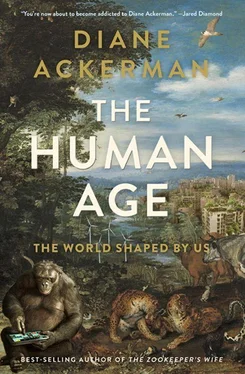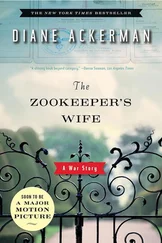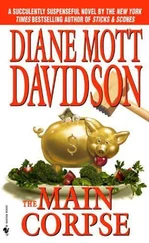In an acrylic tube submerged in the Indian Ocean, at Hilton Hotels’ Ithaa Restaurant, in the Maldives, diners are also surrounded by fish and coral as they eat. Although the Maldives, a nation of islands only five feet above sea level, emits but a tiny fraction of the world’s pollution, its president, Mohamed Nasheed, has set the most ambitious climate goals of any country on Earth, promising to go carbon neutral within ten years, while building sustainable hotels and restaurants and even a floating golf course. “Our oil-fired power stations will be replaced with solar, wind, and biomass plants,” Nasheed explains. “Our waste will be turned into clean electricity through pyrolysis technology, and a new generation of boats will slash marine transport pollution. By 2020, the use of fossil fuels will be virtually eliminated in the Maldivian archipelago.” Greening the economy is good for the Maldives, which has begun attracting a flock of eco-tourists and investors, and it’s also a model for changes radical enough to help fix the climate.
In some cities, coexisting with nature means salvaging rusty old infrastructure, reclaiming abandoned blocks and trashyards, and forging junked metal into inviting habitats for plants, animals, and humans. In every U.S. state, and many other countries from Iceland to Estonia, Australia, and Peru, out-of-work railroad tracks have morphed into peaceful “rail trails” ideal for biking, hiking, and cross-country skiing. Most often they slip through towns or skirt farmlands, drawing both humans and wildlife to leafy byways. I’ve biked or cross-country skied on some beauties in Ohio, California, Arizona, and New York. Memorably, biking on a rail trail outside Gambier, Ohio, at dawn, I was chased by a flock of farm geese. I knew their charge was merely bravado, so I pedaled slowly and let them nip at my pant legs, which seemed to give them a sense of territorial satisfaction, and they soon returned to the barnyard. I enjoyed their brief honking companionship, and learned something about geese I didn’t know: what clamorous watchdogs they make.
A different stripe of oasis growing in popularity is the High Line on Manhattan’s West Side, a surprising sprawl of undulating benches, nests, perches, and lookouts, giving New York City yet another bridge—this one between the urban and the rural. An old elevated freight spur, little more than a rusty eyesore on the Hudson, it’s metamorphosed into a tapestry of self-seeding wildflowers and domestic blooms. It isn’t the first raised park (there’s the Promenade Plantée in Paris, and remember the Hanging Gardens of Babylon?), but the High Line is the loveliest city rail trail I know.
Picturesque, with many scenic views, it’s also richly detailed and alive, allowing you to feel elevated in spirit, floating in a garden in space where butterflies, birds, humans, and other organisms mingle. In a practical sense, it’s a lofty shortcut, a sky alley that avoids all the intersections. A million people have already strolled its landscaped corridors, and it’s inspired other cities hoping for similar sky parks. Chicago, Mexico City, Rotterdam, Santiago, and Jerusalem are among those following suit with their derelict trestles, each an urban renewal project featuring regional plants and its own special character or sense of humor. In Wuppertal, Germany, the rails-to-trails corridor includes a brightly colored LEGO-style bridge. Like the wastewater wetlands, such projects are widening our notion of recycling and yielding an urban lifestyle that’s interwoven with nature.
As one salve in our medicine cabinet of good ideas, these vest-pocket urban parks and wildlife corridors have deep roots around the world, from nest boxes for storks in Romania, Switzerland, Poland, Germany, Spain, and other havens along their well-flapped migration routes to species-rich Central Park in the heart of New York City, London’s eight city parks (in several of which deer roam), the temperate rainforest of Vancouver’s Stanley Park, Moscow’s Losiny Ostrov (“Moose Island”) National Park, Sanjay Gandhi National Park in Mumbai, sod roofs and greenways from Germany to the Faroe Islands, St. Luke’s Hospital rooftop garden in Tokyo, mandatory rooftop gardens in Copenhagen (and proposed in Toronto). A surprising jumble of native species thrives in and around heavily planted Rio de Janeiro, Istanbul, Cape Town, Stockholm, and Chicago, which have become biodiversity hotspots. Then there’s Singapore’s big, blooming, downtown Gardens by the Bay, enriching city life with more than 240,000 rare plants, flowers, and trees in domes that rise sixteen stories over the city. Including a cloud forest and aerial walkways, the gardens collect rainwater, generate solar electricity, and bathe the air. Opening on June 29, 2012, they drew 70,000 nature-hungry visitors during the first two days.
Although these new city oases won’t work for all species, or for all communities, the trend for rewilding our cities is growing. It’s positive, it enlightens, it’s widespread, and it helps. We need to retrofit and reimagine cities as planet-friendly citadels. They’re our hives and reefs. Sea mussels aren’t the only animals living in individual shells that are glued together.
A Green Man in a Green Shade
As a child, Patrick Blanc loved going to the doctor’s office. A six-foot-long aquarium in the waiting room tickled his eyes with colorful tropical fish and plush green plants that swayed in the current and beckoned like hands. To an urban boy growing up in the Parisian suburbs, it offered a glimpse of paradise. When he put his ear to the small box attached to the aquarium, he heard the bubbling of water through tubes and the filter’s hum. The hydraulics and engineering intrigued him as much as the fish, and before long he designed his own small aquarium at home. For a spell, he also adopted coral-beaked waxbills, setting them free on Thursday and Sunday mornings to fly around the apartment.
As he entered adolescence, his nomadic curiosity drifted from aquariums and birds to aquatic plants, and then, at fifteen, he leapt above the waves to the world’s moist shaded zones, the mysterious understory of tropical forests. A college trip to the rainforests of Thailand and Malaysia brought the revelation that “plants could sprout at any height, not merely from the ground.”
Now a bounty of planted walls refreshing cities around the world owe their design or inspiration to Blanc’s eco-pageants, and lure birds, butterflies, and hummingbirds while they mutate with the seasons.
One of Blanc’s personal favorites, a green city icon, is the magnificent Quai Branly Museum in Paris, which opened in 2006 and was greeted by many as a botanical epiphany. Multitextured meadows climb the thirteen-thousand-square-foot facade of the building, more than half of which is alive. The rest is windows, creating a giant plaid of thick-leafed, mossy, breathing wall, touchably soft, rich with scent, atwitch with birds.
Cloaking the facade in great variety to reflect the cultural diversity of the world’s artists, Blanc chose a pastiche of species from temperate zones in North America, Europe, South America, Asia, and Africa. He would have included Oceania, but tropical plants can’t survive the Paris winters, and the facade—which is part botanical tapestry, part hidden lagoon, and entirely soil-free—is intended to endure for many years, filling the senses of Parisians, and building a 40-foot-tall, 650-foot-wide ecosystem amid the hard premises of city life, while also helping to purify the air and eliminate carbon dioxide. In warm weather, flowers bloom, butterflies nectar, and birds perch and nest in the dense thickets. One half-expects to find miniature deer browsing on its mossy hillocks. The museum director plans on adding frogs and tree lizards. Because our horizontal indoor life can flatten the mind, some of the administrative offices also have smaller vertical gardens, which are visible through the windows, blurring the line between outside and inside even more.
Читать дальше












